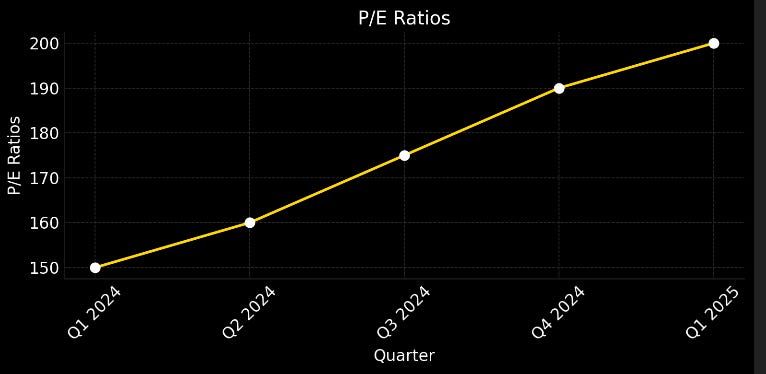Elon’s Goodfellas Moment: How a Trump Feud Sparked Tesla’s Worst Day
Just like Jimmy Conway, Musk is discovering that attention—especially political—is dangerous.
In Martin Scorsese’s Goodfellas, Jimmy Conway doesn’t get taken down by the heist itself—it’s what happens after. His crew can’t help themselves. They flaunt their money, draw too much attention, and suddenly the walls start closing in. The message: the score isn’t the risk—it’s the spotlight.
Today, Elon Musk played Jimmy.
Today, Elon Musk played Jimmy.
Tesla shares nosedived -14.5%, marking one of the worst single-day crashes in the company’s history. But this wasn’t about disappointing earnings, missed delivery targets, or even macroeconomic headwinds. This was political—and personal.
Musk, long a high-wire act in both tech and politics, publicly blasted Donald Trump’s newly announced $2 trillion spending plan, calling it “fiscally reckless.” In a response Trump mocked Musk’s outrage and warned that the easiest way to trim the budget might be to start with “Elon’s government subsidies and contracts.”
Wall Street took the threat seriously.
The market reaction was swift and severe. Suddenly, it wasn’t just about Tesla’s valuation—it was about risk to its federal support, to clean energy incentives, to massive government contracts tied to EV infrastructure, energy storage, and even SpaceX. Investors who once saw Musk as politically bulletproof are now questioning whether his relationship with Washington is becoming a liability, not an asset.
Yet, the feud merely exposed deeper structural cracks already forming beneath Tesla’s soaring stock valuation. With a price-to-earnings (P/E) ratio of nearly 200 before today's collapse, Tesla’s valuation implied the company would need to quadruple earnings almost overnight.
But reality painted a drastically different picture: Tesla’s sales are not growing—they're declining sharply in key markets. European sales alone plunged 30% in early 2025, while China's BYD overtook Tesla's European sales in April for the first time ever. Such stark evidence indicates the market has grossly overestimated Tesla’s growth prospects.
Compounding the problem, Trump's spending bill proposes eliminating the $7,500 EV tax credit starting January 2026, potentially wiping out roughly $7 billion annually from Tesla’s profit line. Without this crucial subsidy, Tesla could swing from robust profitability to potentially losing over $1 billion annually if vehicle prices remain unchanged.
Additionally, Golden Coast Consultants have raised red flags around Tesla’s accounting practices—rapid increases in accounts receivable amid declining sales hint at revenue recognition tricks reminiscent of Enron-era manipulations. This fuels investor fear that Tesla's true financial health may be significantly weaker than reported.
Tesla’s dilemma echoes Jimmy Conway’s cautionary tale: flaunting excessive valuations attracts unwanted scrutiny, and eventually, reality always catches up. Now, Tesla investors must brace themselves for further volatility.
So, how can investors navigate Tesla's turbulent waters?
Greg Crennan, Chief Market Strategist at Golden Coast Consultants, offers a compelling strategic move to safeguard investors from ongoing market shocks. He has strategies for both Bears and Bulls.
Keep reading with a 7-day free trial
Subscribe to The Coastal Journal to keep reading this post and get 7 days of free access to the full post archives.






